Freedom of Choice Under Fire in Ohio
Toledo, OH – In an attempt to outlaw all abortions, Ohio House Bill 480 was introduced on November 2, 2021 to protect “unborn persons,” making it the most extreme bill to move through a state’s legislature in the recent string of bans popping up across the country. Other laws like Ohio’s new “Born-Alive Infant Protection Act” are also on the rise to further restrict reproductive rights and spread “pro-life” ideologies. On the other side of the aisle, a group of clinic escorts in Toledo work to protect patients and the freedom to access healthcare.
HB 480, also known as The 2363 Act, would adopt the same type of vigilantism as the Texas 6-week abortion ban by authorizing private rights of action against people performing or inducing abortions and people who aid or abet abortions. Therefore, the bill empowers everyday people to file lawsuits against their fellow community members, incentivizing them with a bounty reward of at least $10,000. The state would remain off the hook for enforcement, and in doing so, would make it difficult for them to be held legally accountable for passing a law which effectively voids Roe v. Wade.
(The bill says that suits cannot be filed by state or government employees, nor can they be filed by “a person who impregnated the abortion patient through an act of rape, sexual battery, gross sexual imposition, or any other act prohibited by Title XXIX of the Revised Code.”)
The bill’s primary sponsors are State Representatives Jena Powell (R-Arcanum) and Thomas Hall (R-Madison Twp.) They named the bill “in honor of the 2,363 children who are lost every day in our country due to the violence of abortion.”
“The 2363 Act is about protecting our fundamental, constitutional right to be born and live. Abortion kills children, scars families, and harms women. We can and must do better.”
Ohio Rep. Jena Powell (R-Arcanum)
Coincidentally, the preservation of life and the protection of pregnant people are also cornerstones of the pro-choice movement. Nancy Pitts, a board member of abortion fund Women Have Options Ohio (WHO-O), wrote in a testimony in opposition to Ohio’s 2014 HB 248: “Abortion helps women stay in school, care for their families, and live their best lives.”
WHO-O was founded in 1992 and since then has been the state’s primary fund providing “financial assistance and practical support (transportation/housing/ etc) to help patients afford contraception, emergency contraception, and abortion services.”
The patients WHO-O serves range from struggling single parents, to students who want to complete their education, to survivors of domestic violence and rape, and people who have an illness/condition that would endanger them and the fetus.
“All deserve to make their own reproductive choices, without jeopardizing their health or future . . . Ohioans forgo food, risk eviction, and pawn their possessions as they attempt to raise money for an abortion. Some are forced to continue the pregnancy, abandon their education, and stay trapped in poverty.”
Women Have Options Ohio
On top of the potential negative effects on a person’s finances, education, and quality of life, pregnancy can be dangerous, and even deadly.
The United Health Foundation’s 2021 Health of Women and Children Report found that the United States has the highest maternal mortality rate of all developed countries, and the rate is rising.
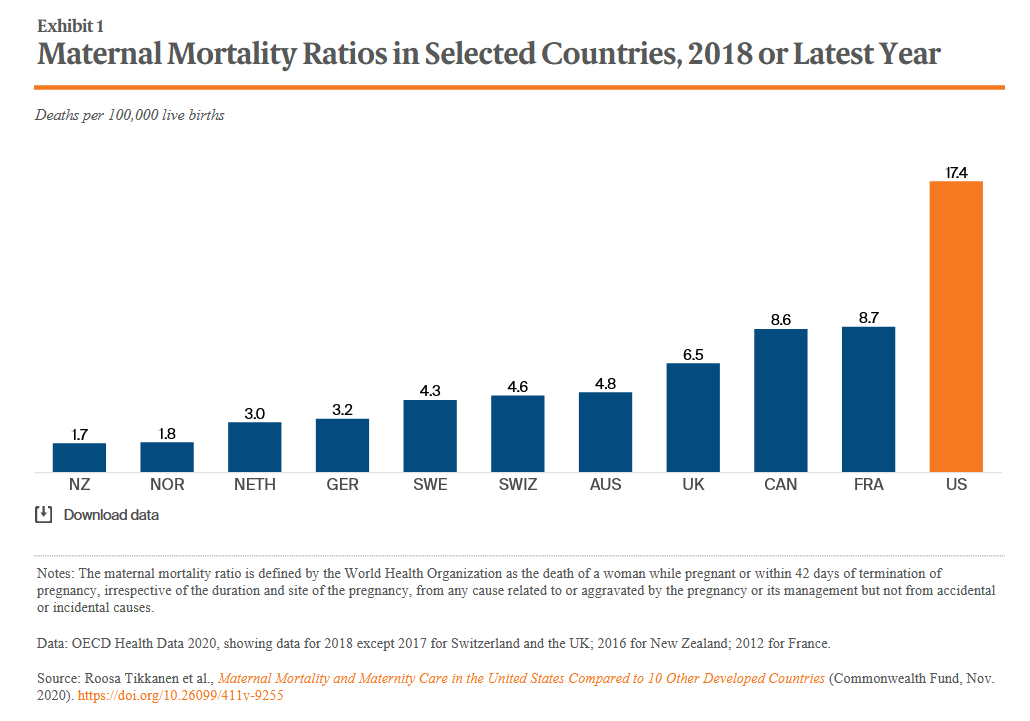
Additionally, the U.S. infant mortality rate has been consistently higher than the rate in other developed countries. For Black mothers and babies, the mortality rates compared to white mothers and babies are 2.4 times higher and 2.3 times higher, respectively.
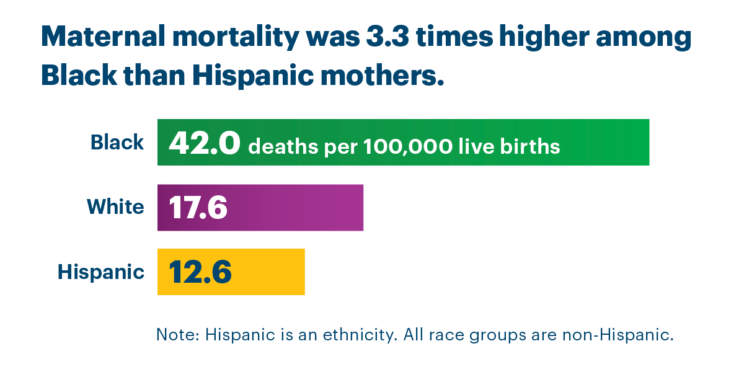
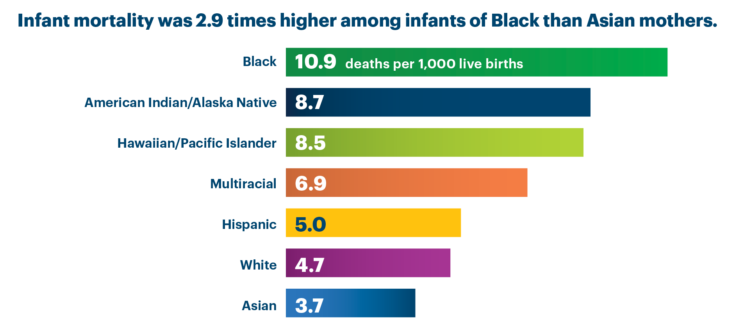
Within HB 480’s full text, it lists what arguments those being sued are allowed to use in defending themselves. One of the permissible “affirmative defenses” is if the abortion was done to save the life of the pregnant person. So although a physician who provides an abortion to save a patient’s life can still be sued and potentially have to pay more than $10,000, they would be able to use that fact to try and prove that the procedure was legal.
Of course the bill is not yet law, and it’s been in the House Committee on Families, Aging, and Human Services since November 9, 2021, but pro-choice advocate Kristin Hady thinks the bill will be passed, “and when it does get passed, I’m sure it will be challenged.”
“We should be able to get any healthcare without shame or unnecessary restrictions or outside interference. But that is what they’re doing.”
Kristin Hady, clinic escort at Toledo Women’s Center in Toledo, OH
Protecting Patients
Ohio has a population of more than 11.6 million people, yet there are only nine abortion clinics in the state, with six that are full-service clinics. In Toledo, OH, where over 270,000 people live, there is one abortion clinic—Toledo Women’s Center (formerly Capital Care).
For over seven years, Kristin Hady has run the clinic’s escort group, which takes on the responsibility of escorting patients in and out of the clinic. She told Unicorn Riot that after reading a news article about an abortion clinic escort being doxxed by anti-choice protesters, Hady was inspired to try the risky, yet critical work of clinic escorting.
A friend of a friend knew someone who worked at Capital Care, and as soon as her middle child was born, Hady jumped right in. She says beyond their work of escorting, the clinic escort group tries “to show the public what it’s like outside of abortion clinics and the harassment that patients have to deal with.”
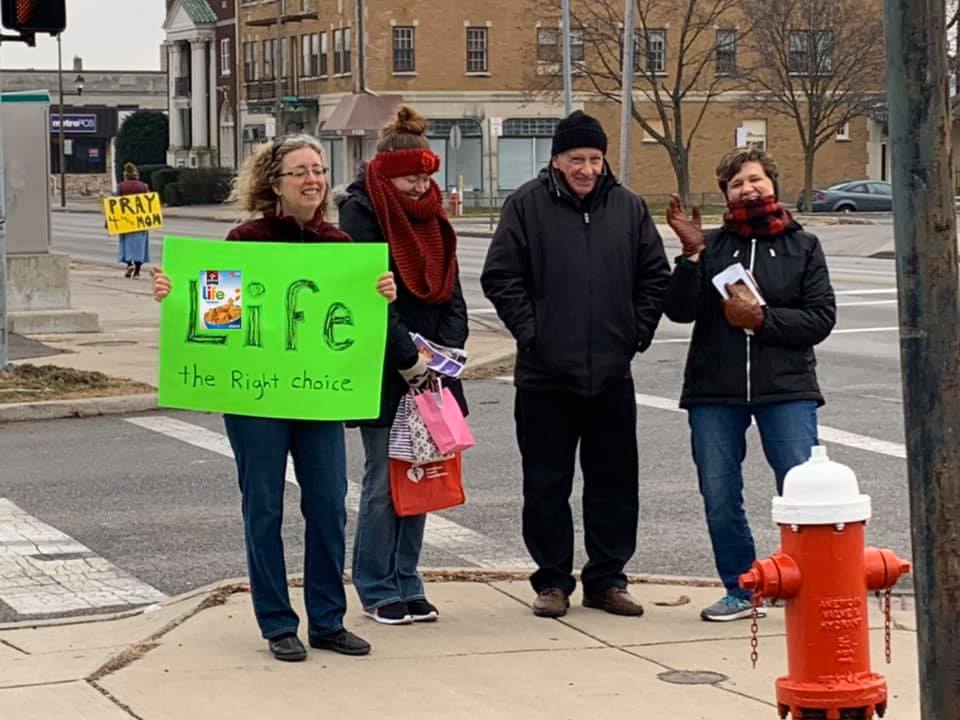
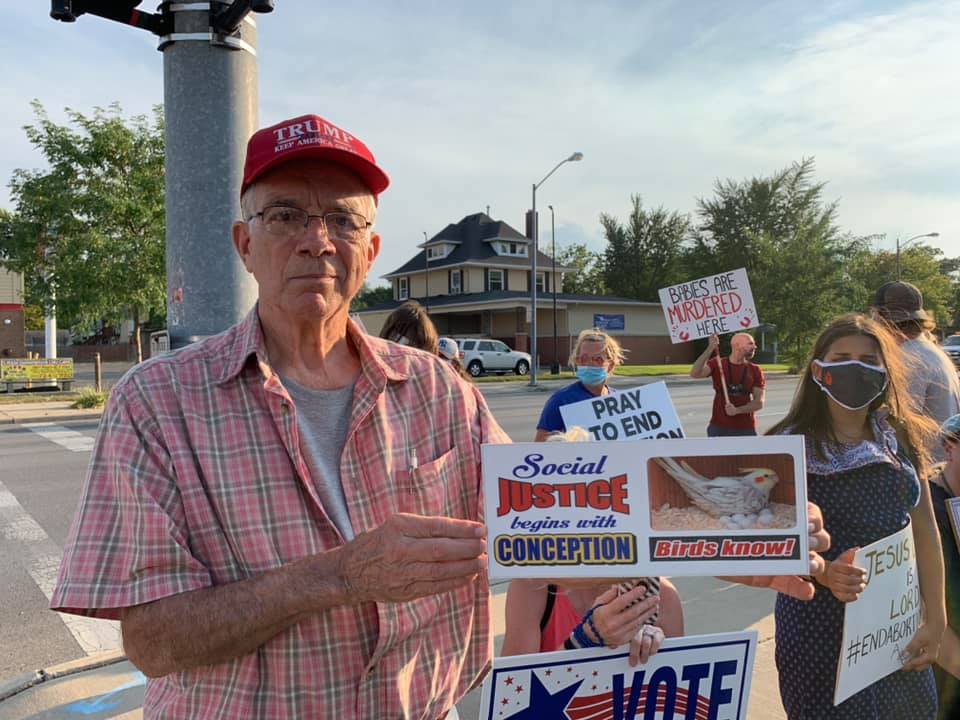
In addition to the daily harassment the clinic and their patients face, the anti-choice protesters occasionally take escalated actions. On October 28, 2021, the clinic’s exterior electrical box was set on fire. The Toledo Fire & Rescue Department investigation ruled it arson and found traces of an accelerant.
“Like any other clinic in the country, it definitely has felt like things have escalated for us in the last couple years. We’ve had multiple windows busted out with rocks thrown at our building, and we’ve had somebody kick or smash through some wood paneling in the front of our building.”
Kristin Hady, escort at Toledo Women’s Center
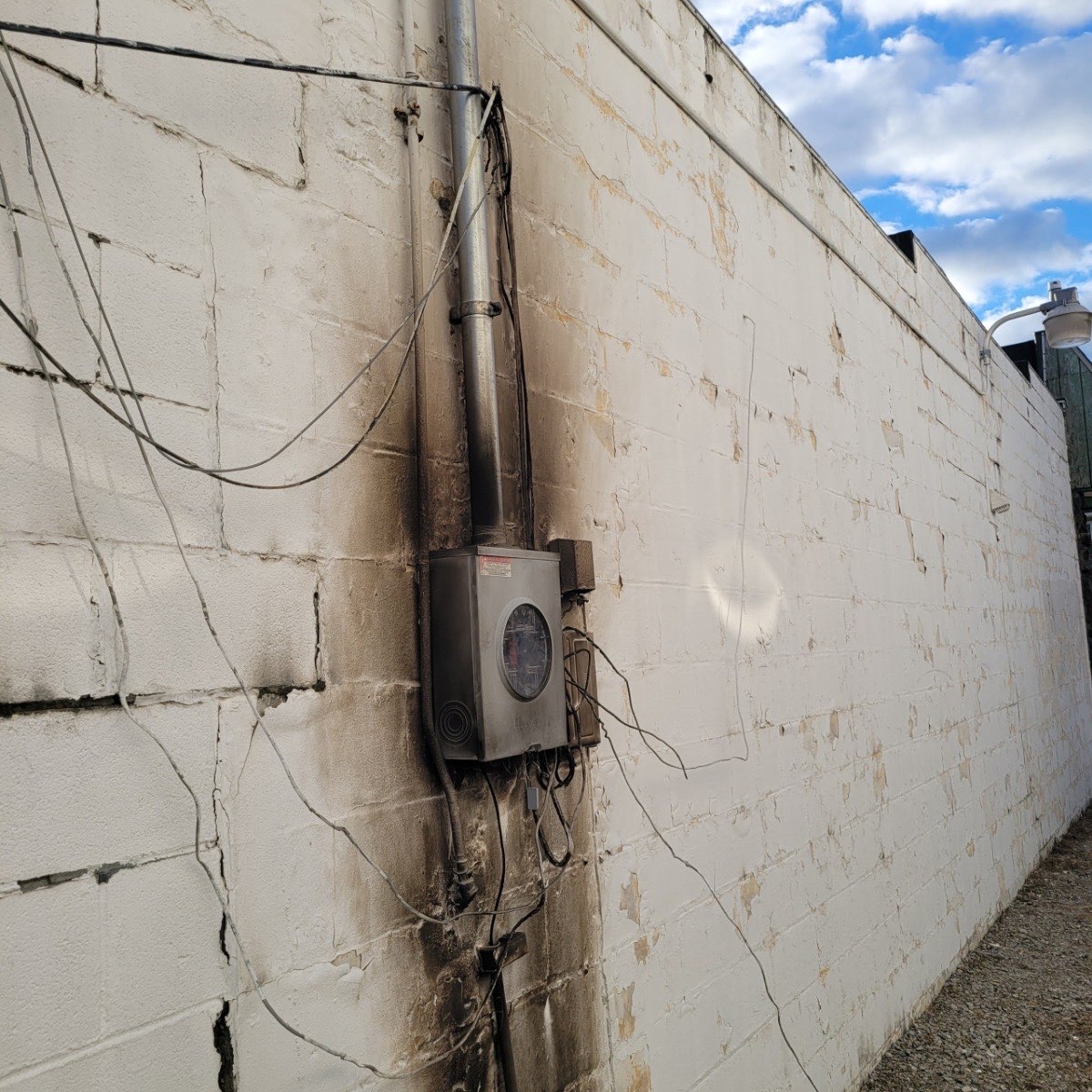

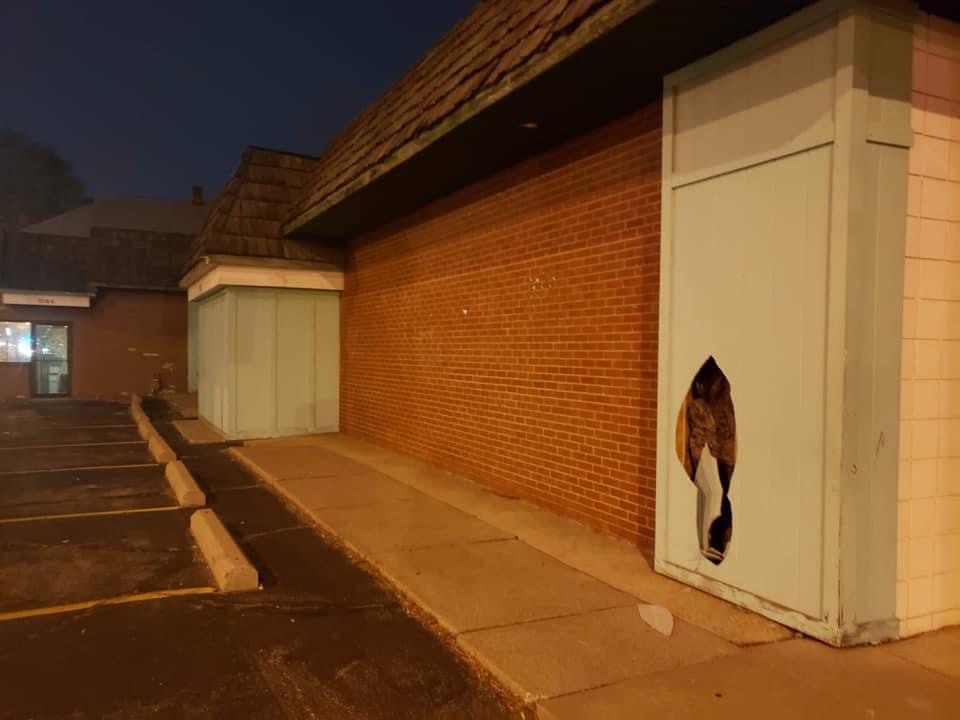
Hady walked us through what it’s like for patients arriving at Toledo Women’s Center. She said that about 95% of patients accept their escort help.
“It can be overwhelming. It’s a very weird scenario for a patient to pull up and there are people on the sidewalk yelling at them, and then there is us, you know escorts, while we aren’t as aggressive as protesters, it’s still a stranger walking up to your car, so I think a lot of the time patients are somewhat nonplus, and just accept us walking them in, it’s honestly pretty rare that somebody declines our help.”
Kristin Hady, escort at Toledo Women’s Center
She then described the duties of the escort group during this “very weird scenario.” Hady says ideally there are at least two escorts, so that one goes behind the car or behind where the patient is, and the other escort called the ‘point escort’ is at the front. The escort at the back has an umbrella most of the time and/or a bluetooth speaker. Hady says their purpose is “to put these protesters out of sight, out of mind, and if we can visually block them, as well as, play music so that you can’t hear them, it’s a really incredibly effective method that pretty much neutralizes the anti.”
The point escort who is at the front of the car keeps their distance and makes sure they are maintaining eye contact or visually alerting patients that they are with the clinic. Hady says as soon as the car door opens, they introduce themself and offer to walk them up to the clinic’s door, and the second escort stays at the back. As they walk with the patient, they give them directions on what to do when they get inside and engage in basic small talk. Hady says the whole interaction is about 15-30 seconds long.
“If they need anything else, we’ve performed a lot of roles. We’ve moved cars, we’ve retrieved things for patients so they don’t have to come out. I, at one point, had to climb into somebody’s sunroof because they had locked their keys in their car and I was the only one that could fit. We’re a full service escort group, if we can help out, we will. When patients walk back out we again offer to walk them out. Our entire ethos is just creating a safe and welcoming environment for the patient, in a non-engaging manner with the protesters.”
Kristin Hady, escort at Toledo Women’s Center
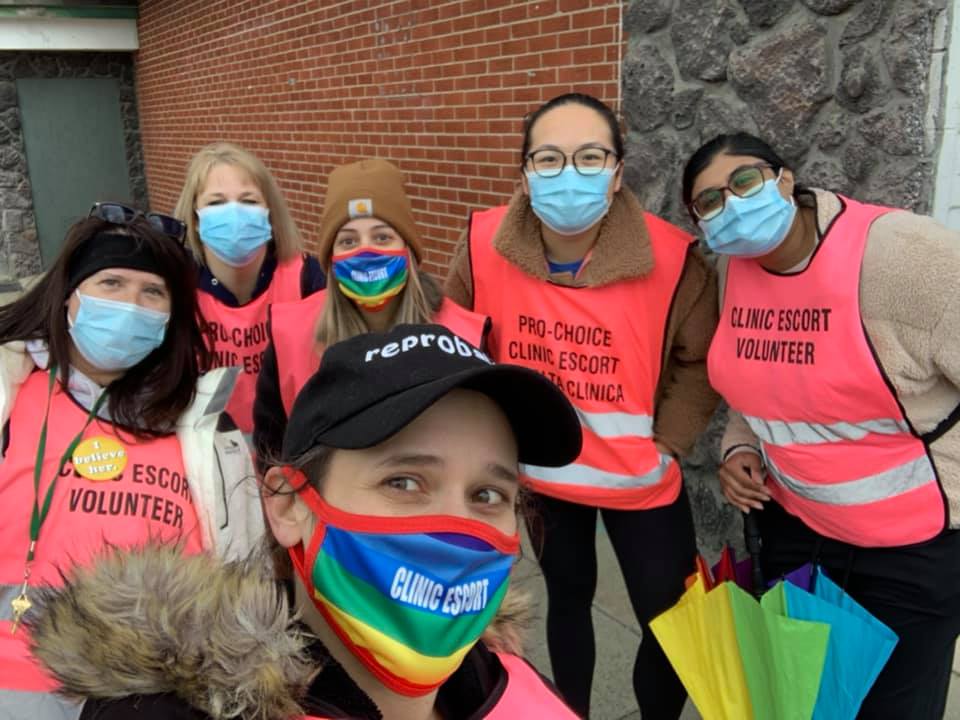
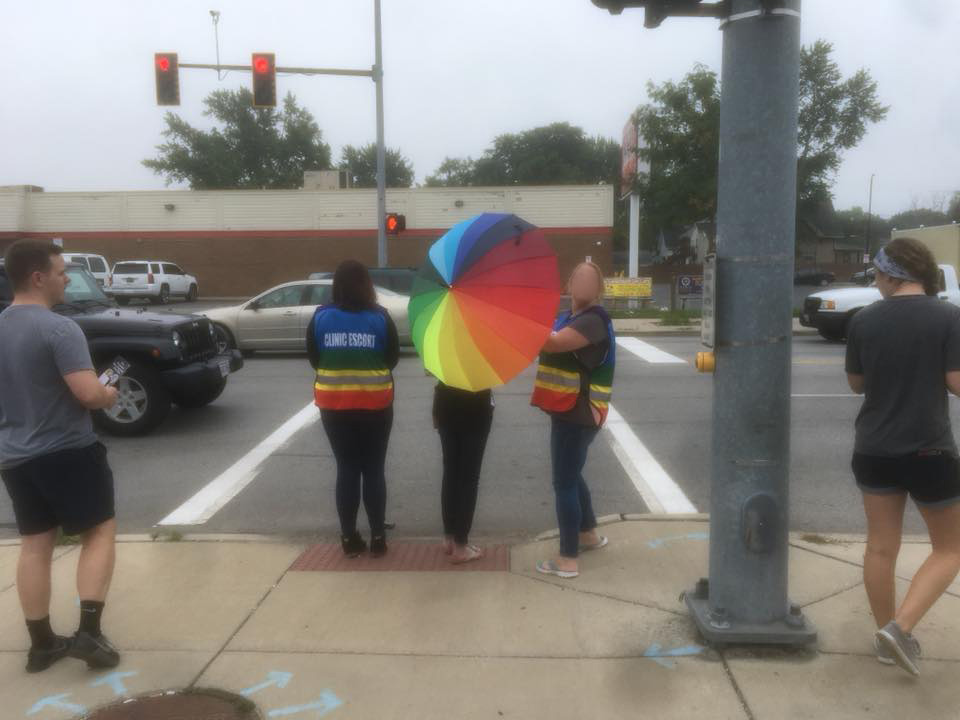
Hady highlights that her escort group is different from a clinic defense group because the escorts don’t engage, whereas defenders do. She says she isn’t against what defenders do and that she loves “engaging in a lot of circumstances,” but that it isn’t helpful to their group’s purpose.
For the most part the protesters stay on the sidewalk, Hady tells us. Though when escort shifts aren’t covered, which happens because they are all volunteers and it’s weekday hours, clinic patients report that protesters sometimes enter the clinic’s parking lot, walk up to their cars, knock on their windows, and follow them up to the clinic’s door.
Even though there are constant protesters, Toledo is a “majority pro choice area,” according to Hady. However when speaking of the state as a whole, she says that Ohio is “red state hell.”
“Our legislature is filled with religious zealots that are seeking to use their beliefs against all of us. And it’s hot garbage.”
Kristin Hady, escort at Toledo Women’s Center
Hady is unsurprisingly against HB 480 and calls it “an incredibly awful bill.” She continues to say, “we always deserve access to abortion at whatever gestation period we are in and we have the right to an abortion, and so this is just a way for them to try and skirt past Roe and it’s just a deceptive ploy to eliminate access to abortion care nationwide.”
HB 480 would outlaw all abortion at any time of gestation, even if someone is raped. Hady mentions how she doesn’t think the fact that it has no exceptions should matter. “We shouldn’t need or demand violence to be perpetrated on us to have the right to access an abortion.”
Ohio’s New “Born-Alive Infant Protection Act”
On December 22, 2021, Ohio Governor Mike DeWine signed the “Born-Alive Infant Protection Act,” or Senate Bill 157, into law. The law reads, “No person shall purposely take the life of a child born by attempted abortion who is alive when removed from the uterus of the pregnant woman.” If this law sounds familiar to Ohioans, it’s because there’s already a nearly-identical law in place, but this new law adds the element of “purpose.”
If a physician doesn’t take “the measures required by the exercise of medical judgment” in their attempt to “preserve the health or life” of the fetus, then they will be guilty of first degree felony “abortion manslaughter.” Physicians are also required to submit detailed forms to the Ohio Department of Health (ODH) within fifteen days of a patient being discharged, no matter if the fetus survived the abortion. If the physician doesn’t, they face misdemeanor charges.
(The law also states that the patient can sue the physician for the “wrongful death” of their child and for “injury, death, or loss to person or property.” A patient can also sue the physician for not submitting the required forms to the ODH, and if they prevail in their legal action, they receive $10,000 in damages, court costs and reasonable attorney’s fees.)
This law, and the older law on the books, seem to be based off an idea that fetus’ being born alive after an attempted abortion is a common occurrence, however according to the National Vital Statistics System (NVSS) Mortality Data, that isn’t the case. From 2003-2014, 315,392 infants who were born alive died soon after. Out of the deaths occurring to those infants born alive, “143 could definitively be classified as involving an induced termination,” and of those, “97 involved a maternal complication or, one or more congenital anomalies.”
Therefore during that 12-year period, 0.0454% were induced terminations, and of that minuscule amount, about 68% involved health complications for the person giving birth and/or the infant.
Another aspect of this law is the change to Ohio’s transfer agreement law, which according to the Planned Parenthood Advocates of Ohio was “the true, insidious intent of the bill.”
“Ohio already requires medically unnecessary contracts (called variances) between abortion providers and physicians who hold admitting privileges at local hospitals. The proposed amendment to SB 157 would make this requirement even more extreme, disqualifying all physicians who teach medical students or are affiliated with public hospitals and institutions from entering these contracts with abortion clinics.”
Planned Parenthood Advocates of Ohio press release
Under Ohio law, ambulatory surgical facilities (like abortion clinics) need to “have a written transfer agreement with a local hospital that specifies an effective procedure for the safe and immediate transfer of patients” if complications or emergencies happen. If they don’t have an agreement, they cannot stay in operation.
Kristin Hady calls the transfer agreement law “pointless and moot.” She points out that if there is an emergency situation the abortion clinic isn’t capable of handling, then “the patient is going to be taken to the closest hospital that is qualified to take them, and a hospital can’t refuse somebody because they came from an abortion clinic.”
“So it’s moot, it doesn’t do anything, it doesn’t change anything. But what it does, is it makes it incredibly difficult for clinics to obtain these agreements because hospitals either, maybe they’re a Catholic hospital, a Catholic system, they would never sign one, or they just don’t want to get into the politics, they don’t want to get into that fight.”
Kristin Hady, escort at Toledo Women’s Center
Abortion Bans Threaten Roe v. Wade
The U.S. Supreme Court Considers Legality of Federal Abortion Protections
On December 1, 2021, the U.S. Supreme Court heard oral arguments concerning whether all pre-viability prohibitions on abortion are unconstitutional, therefore putting Roe v. Wade at risk. Right now in the United States, people who become pregnant can, under federal law, have a legal abortion up until the 3rd trimester (about 7 months), because after that point, the fetus is usually viable, or able to live outside the womb.
(You can read the transcript of the Supreme Court hearing here, or listen to the hearing here.)
The Court agreed to the hearing in response to the state of Mississippi requesting the review of a lawsuit filed against it by the Center for Reproductive Rights (CRR) and their colleagues in 2018. The lawsuit was filed to stop a 15-week abortion ban that the Mississippi Legislature passed in March of that year.
(The law never went into effect because it was struck down by a federal district court judge in November 2018, and then the Fifth Circuit Court of Appeals upheld the lower court’s decision in December 2019.)
During the December 2021 hearing, Mississippi Solicitor General Scott G. Stewart, who spoke on behalf of the state, argued that the court ruled incorrectly in 1973 and in 1992: “Roe versus Wade and Planned Parenthood versus Casey haunt our country. They have no basis in the Constitution. They have no home in our history or traditions.”
In passing Roe v. Wade in 1973, the Supreme Court “established a right of personal privacy protected by the Due Process Clause that includes the right of a woman to determine whether or not to bear a child.”
The June 1992 Planned Parenthood v. Casey decision upheld Roe v. Wade and added the standard of undue burden.
“An undue burden exists, and therefore a provision of law is invalid, if its purpose or effect is to place substantial obstacles in the path of a woman seeking an abortion before the fetus attains viability.”
Planned Parenthood v. Casey decision
Mr. Stewart’s main talking points were that each state should get to decide for themselves on the matter of abortion, that viability and abortion are nowhere in the constitution, and that Roe and Casey are the only instances where the court recognizes “a right to end a human life.”
Time after time, Mr. Stewart emphasized that the state’s ideal goal is to “overrule full scale,” i.e. repeal Roe and Casey. Thus, states passing laws limiting or denying access to abortion inevitably put federal protections at risk, and may lead to the full blown abolition of them.
During the hearing, Supreme Court Justice Sonia Sotomayor raised many counterpoints to Mr. Stewart’s arguments. She mentioned how “in Casey and in Roe, the Court said there is inherent in our structure that there are certain personal decisions that belong to individuals and the states can’t intrude on them.”
Justice Sotomayor listed some other rulings where the court recognized individual personal decisions: the religion parents will teach their children, parents’ ability to home-school, and the right to choose who to marry. She added that none of the examples she listed are in the U.S. Constitution, but that they have “been discerned from the structure of the Constitution.”
As Justice Sotomayor and Mr. Stewart snapped back-and-forth about viability and when a fetus has the rights of personhood, she asked him a question that is at the forefront of the pro-choice movement: “So when does the life of a woman and putting her at risk enter the calculus?”
Bans on the Rise
As the only pre-viability ban in effect in the country, Texas’ 6-week abortion ban has essentially prevented people from getting any abortions in the state since September 2021. Most people find out they are pregnant around the 6-week mark, and therefore wouldn’t have time to get an abortion. In Texas specifically, approximately 85-90% of people who obtain abortions are at least six weeks into pregnancy, according to the Center for Reproductive Rights.
Before the law went into effect, there were over a dozen pre-enforcement challenges brought against it. The U.S. Supreme Court was asked to step in and block the law three times, yet it chose not to. The most recent decision not to block it happened nine days after the December 2021 Mississippi hearing.
Although the court sided with the state in a majority rule, they also decided that abortion providers had the right to challenge the law in federal court.
Justice Sotomayor, along with Justice Stephen Breyer and Justice Elena Kagan, made it known in the court’s decision that they believe the law is unconstitutional: “For nearly three months, the Texas Legislature has substantially suspended a constitutional guarantee: a pregnant woman’s right to control her own body . . . The Court should have put an end to this madness months ago, before S. B. 8 first went into effect. It failed to do so then, and it fails again today.”
On January 3, 2021, the 5th U.S. Circuit Court of Appeals announced it will hear oral arguments about Texas’ 6-week ban on January 7. Later that day, the American Civil Liberties Union (ACLU) filed documents to the U.S. Supreme Court asking them to “urgently step in to prevent the Fifth Circuit from needlessly delaying our lawsuit and compounding the harm this ban has already inflicted on Texans.” Check out the ACLU’s twitter thread below.
Another 6-week abortion ban is in the works in Florida. At the end of September 2021, Republican state Rep. Webster Barnaby proposed an identical bill to Texas’ 6-week ban called the “Florida Heartbeat Act.” In an effort to secure the right to choose, democratic legislatures in Florida introduced Senate Bill 1036 and House Bill 709 at the end of November 2021. Both would prevent anyone including the government from interfering with an abortion.
Soon after the Mississippi 15-week ban on abortion was shot down by the Fifth Circuit, the state passed a 6-week ban. The Center for Reproductive Rights again filed a lawsuit against the state asking a federal district court to block the law before it took effect on July 1. The court struck down the law, and the state again appealed to the Fifth Circuit. In February 2020, the Fifth Circuit upheld the lower court’s decision.
There are many states with restrictions currently, and more bills are expected to be introduced. Only 18 states will have abortion protections if Roe v. Wade is weakened or overturned. Take a look at your state’s stance with this map created by the Center for Reproductive Rights.
“We Need People on the Ground”
Lead escort at Toledo Women’s Center in Toledo, Kristin Hady, believes that the many restrictions and bans on abortion, including Ohio HB 480, will “serve as a way to galvanize so many people, and honestly I hope radicalize a lot of people.”
Hady sees this as an opportunity “to really get people in line with the understanding that abortion is good and abortions are moral and we all deserve access, and that we aren’t going to make concessions anymore, we aren’t going to meet in the middle, because the concessions that we’ve given over the years are what’s got us here.”
She continues, “So we’re coming and we’re gonna take all that ground back and we’re gonna make sure every person has access to abortion, however many abortions they need, without restrictions, and it’s not gonna be easy for us, but it sure as hell isn’t gonna be easy for them either.”
As introduced bills make their way through state legislatures, lawsuits are heard in courts, and the U.S. Supreme Court contemplates the fate of federal protections for reproductive rights, Hady insists that the reproductive justice movement has the numbers ideologically, but that people “need to show up because it’s only gonna get worse and it’s only gonna get harder to show up, and if we don’t do it now, they’ll do whatever the hell they want.”
“Going to a rally is bare minimum. We need people on the ground. We need people showing up at the State House when there’s an action and they’re in session. We need people showing up with more direct actions and getting involved in a much larger level.“
Kristin Hady, escort at Toledo Women’s Center
To learn about the history (and more about the present) of reproductive rights, take a look at our article link below:
“Abortion is Sacred:” The Past and Present of Reproductive Rights
Follow us on X (aka Twitter), Facebook, YouTube, Vimeo, Instagram, Mastodon, Threads, BlueSky and Patreon.
Please consider a tax-deductible donation to help sustain our horizontally-organized, non-profit media organization:



